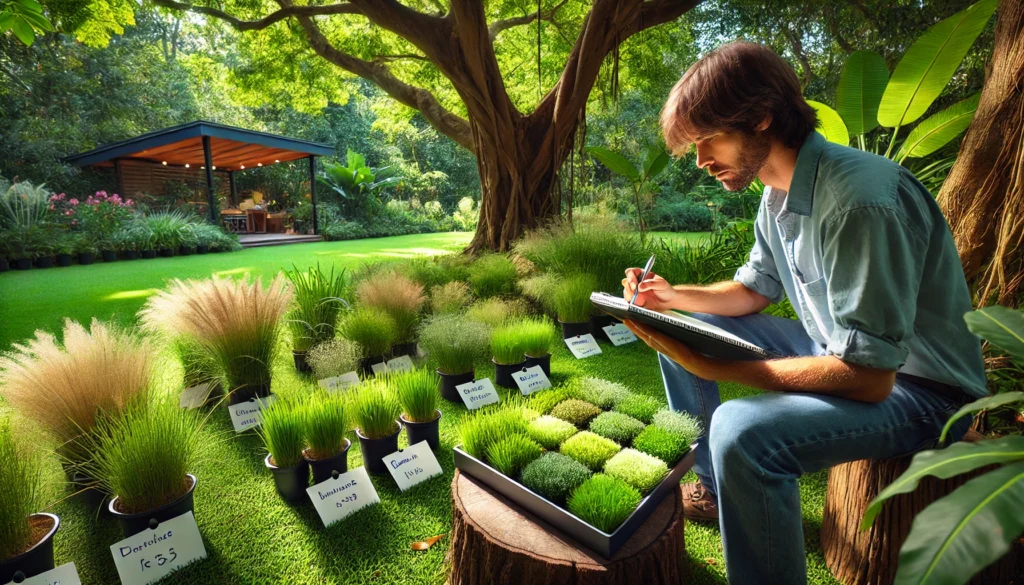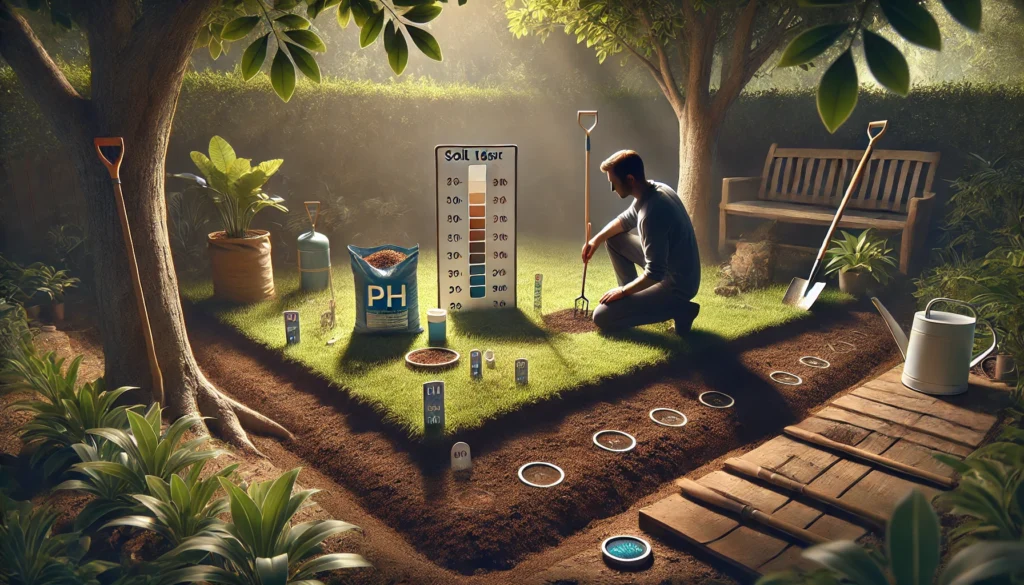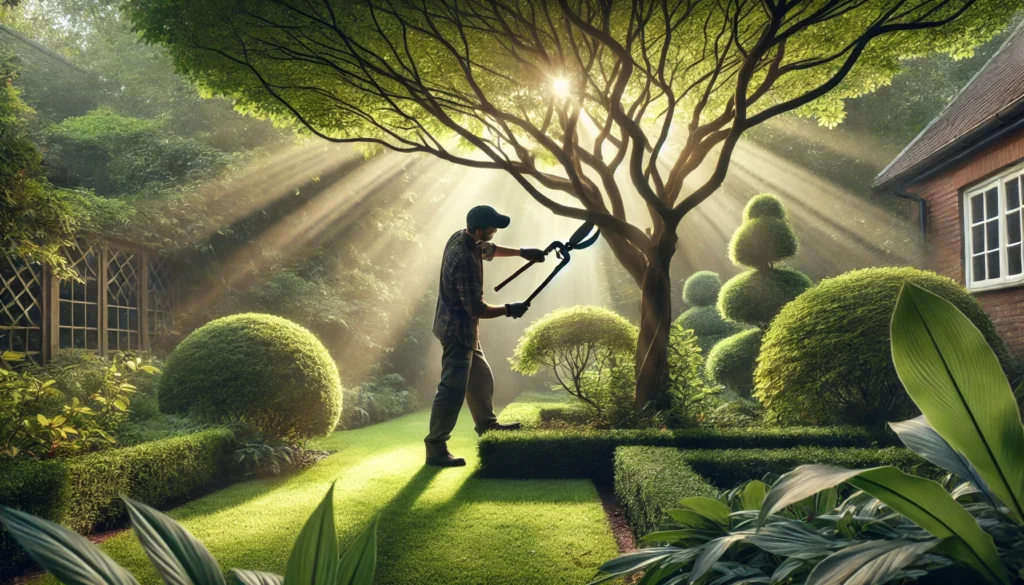7 Best Practices for Planting Grass in Shaded Backyards
Planting grass in shaded backyards poses unique challenges, but with the right strategies, you can create a lush, healthy lawn even in low-light conditions. As someone who has spent years working with lawns of all shapes and conditions, I, Jack Ralph, understand the intricacies involved in crafting a thriving shaded lawn.
This article delves into the best practices for Planting Grass in Shaded backyard spaces, exploring benefits, drawbacks, pros, and cons, while sharing my insights from hands-on experience.
Understanding the Challenges of Shaded Lawns

Shaded backyards, often caused by trees, tall buildings, or garden structures, create an environment where grass must adapt to limited sunlight, less airflow, and increased competition for water and nutrients. Grass, like all plants, relies on photosynthesis, which becomes less efficient in shaded conditions. Over time, this can lead to sparse, patchy yellow lawns that lack the vibrancy of sunlit spaces.
The first step to success is understanding that shaded lawns require a different approach. From grass selection to maintenance routines, every aspect must cater to the unique challenges of low-light areas. In my experience, lawns in shaded spaces can thrive, but they demand patience, attention, and adaptability.
Benefits of Planting Grass in Shaded Backyards
Despite the challenges, shaded lawns offer a range of benefits that make the effort worthwhile:
- Cooler Outdoor Spaces
Shaded areas provide a natural cooling effect, making your backyard more comfortable during hot summers. A shaded lawn can become a serene retreat for relaxation, outdoor patio activities, or entertaining guests without the harsh glare of the sun. - Erosion Control
Grass in shaded areas helps stabilize the soil, preventing erosion caused by rain or wind. This is especially important in backyards with slopes or loose soil, where erosion could otherwise lead to unsightly and costly damage. - Improved Aesthetic Appeal
A shaded lawn adds depth and texture to your landscape, complementing trees, shrubs, and garden beds. The interplay of light and shadow creates a visually appealing environment, making your backyard feel more dynamic and inviting. - Environmental Benefits
Grass in shaded areas improves air quality by filtering dust and pollutants, while also providing a habitat for beneficial insects and small wildlife. A healthy lawn can contribute to the overall ecosystem of your backyard.
Drawbacks of Grass in Shaded Areas
While the benefits are notable, shaded lawns come with their own set of challenges:
- Reduced Photosynthesis
Grass requires sunlight to produce energy through photosynthesis. In shaded areas, the limited light can result in slower growth, thinner grass blades, and an increased risk of disease. - Increased Competition for Resources
Shaded areas are often dominated by trees or large shrubs whose roots compete with grass for water and nutrients. This competition can leave the lawn undernourished, especially during dry spells. - Moisture Retention Issues
Shaded lawns retain moisture for longer periods due to reduced evaporation. While this might seem advantageous, it can create ideal conditions for fungal diseases, moss, and other issues. - Higher Maintenance Requirements
Shaded lawns often require more care than sunlit lawns. From choosing specialized grass varieties to adjusting mowing, watering, and fertilization practices, maintaining a shaded lawn can be time-consuming and labour-intensive.
Best Practices for Planting Grass in Shaded Backyards
1. Selecting the Right Grass Variety

Choosing a shade-tolerant grass species is the cornerstone of success in shaded backyards. Over the years, I’ve experimented with various types and found that:
- Fine Fescues (like creeping red fescue or chewing fescue) are excellent for cool climates and partial shade.
- Tall Fescues are more versatile, with moderate shade tolerance and better durability.
- Zoysia Grass and St. Augustine Grass are ideal for warm climates, thriving in light to moderate shade.
The key is to select a variety that aligns with your region’s climate and the specific level of shade in your backyard.
2. Soil Preparation is Essential

Healthy soil is the foundation of any thriving lawn, but it’s particularly important in shaded areas where grass already faces challenges. Start by testing your soil’s pH and nutrient levels. Grass generally prefers a pH between 6.0 and 7.0.
In shaded areas, soil can become compacted due to foot traffic and root competition. Aerate the soil to improve drainage and root penetration. Incorporate organic matter like compost to enrich the soil and enhance its ability to retain nutrients.
3. Prune Trees and Shrubs Strategically

Allowing dappled sunlight to reach your lawn can make a significant difference. Prune tree branches to thin out dense canopies and increase light penetration. However, it’s essential to strike a balance; too much pruning can diminish the shade that makes the area appealing in the first place.
In one of my projects, I worked with a client whose backyard was overshadowed by mature oaks. By selectively pruning lower branches, we improved light levels enough to support a lush lawn without compromising the natural shade.
4. Optimize Watering Practices

Shaded lawns typically need less water than sunlit areas due to reduced evaporation. Water deeply but less frequently to encourage deep root growth. Overwatering can exacerbate fungal problems, so it’s crucial to monitor soil moisture levels.
I recommend watering early in the morning to ensure the grass has time to dry before evening, reducing the risk of diseases.
5. Use Mulch and Ground Covers Strategically

In heavily shaded areas where grass struggles to thrive, consider using mulch or shade-tolerant ground covers as a complementary solution. Ground covers like creeping thyme or pachysandra can fill in gaps, reduce soil erosion, and enhance the aesthetic appeal.
6. Fertilize Appropriately

Shaded grass often requires additional nutrients due to competition with tree roots. Use a slow-release, balanced fertilizer to provide consistent nourishment. Organic options are particularly effective, as they improve soil structure and health over time.
Fertilize in the early spring and fall to give the grass a strong start during its active growing periods.
7. Adjust Mowing Practices

Mowing shaded lawns too short can stress the grass, making it more vulnerable to diseases and thinning. Set your mower blade higher to allow the grass to grow slightly taller. Taller grass has a greater surface area for photosynthesis, which is vital in low-light conditions.
Pros and Cons of Shaded Lawns
| Pros | Cons |
|---|---|
| Cooler, more comfortable spaces | Reduced growth due to limited sunlight |
| Improved soil stability and erosion control | Prone to fungal issues and moss |
| Unique aesthetic appeal | Requires specialized care and effort |
| Environmental benefits | Competition with tree roots for nutrients |
My Personal Experience with Shaded Lawns
Over the years, I’ve worked on numerous shaded backyards, each with its own set of challenges and opportunities. One of my most rewarding projects involved a backyard nestled under a canopy of ancient maples. The initial lawn was sparse and patchy, with compacted soil and moss overtaking the grass.
By selecting a blend of fine and tall fescues, aerating the soil, and incorporating organic matter, we revived the lawn within a season. Regular overseeding and light pruning of the trees ensured continued success.
Patience and experimentation were key. Shaded lawns often require a trial-and-error approach to determine what works best for each unique environment.
Conclusion
Planting grass in shaded backyards is an achievable goal when approached with knowledge and care. You can create a vibrant, healthy lawn even in low-light conditions by selecting the right grass variety, preparing the soil, and tailoring your maintenance practices.
While shaded lawns may never match the density and vibrancy of their sunlit counterparts, their unique charm and cooling effect make them a worthwhile addition to any landscape. With the insights and strategies shared in this article, you’ll be well-equipped to overcome the challenges of shaded lawns and enjoy their many benefits.
I encourage you to embrace the process and experiment with these techniques in your backyard. Every lawn has its own story, and with dedication, yours can become a shaded oasis that brings joy and beauty to your outdoor space.
FAQs:
What is the best grass type for shaded areas?
Fine Fescue, Perennial Ryegrass, and Kentucky Bluegrass are ideal for shaded backyards due to their shade tolerance and ability to thrive with limited sunlight.
How can I improve grass growth in shaded areas?
Ensure the soil is well-aerated, use shade-tolerant grass seed, water deeply but infrequently, and trim overhanging branches to increase light penetration.
How often should I water grass in shaded backyards?
Grass in shaded areas requires less water than in sunny areas. Water once or twice a week, ensuring the soil stays moist but not overly saturated.
Can I plant grass under trees?
Yes, but it can be challenging due to competition for nutrients and water. Use shade-tolerant grass types, apply mulch around tree bases, and fertilize appropriately.
How do I maintain a shaded lawn?
Mow higher (around 3-4 inches) to allow more leaf area for photosynthesis, fertilize lightly, and avoid overwatering to prevent fungal growth.
Jack Ralph

hey, I’m Jack Ralph, a dedicated grass and lawn expert with years of experience creating beautiful outdoor spaces. I can help you achieve the lawn of your dreams, from seeding to mowing, turning your yard into a natural masterpiece.
Look no further—I’m the key to transforming your lawn dreams into reality! and here to help you achieve a lawn that’s not just a patch of grass, but a canvas of natural artistry.







